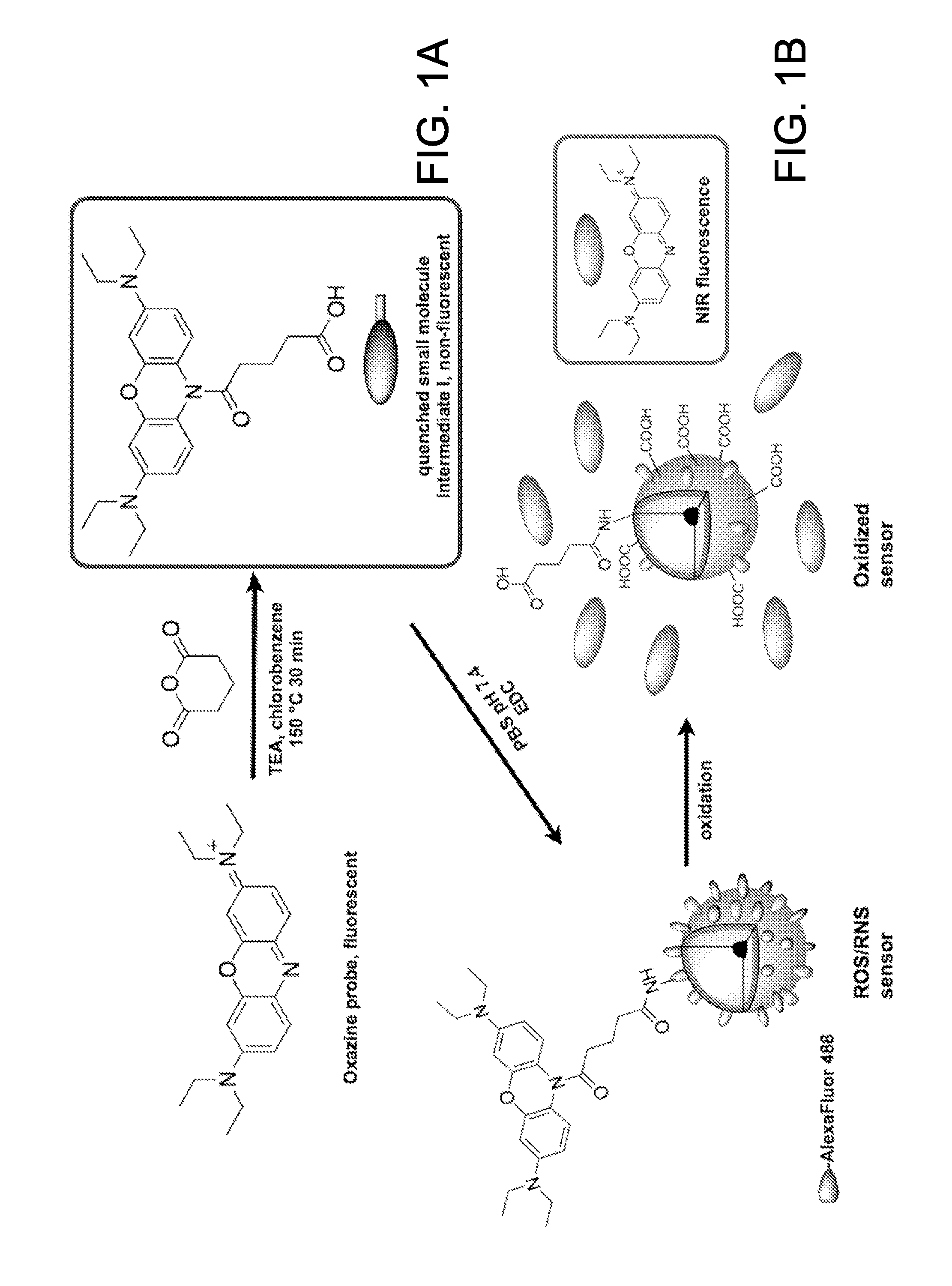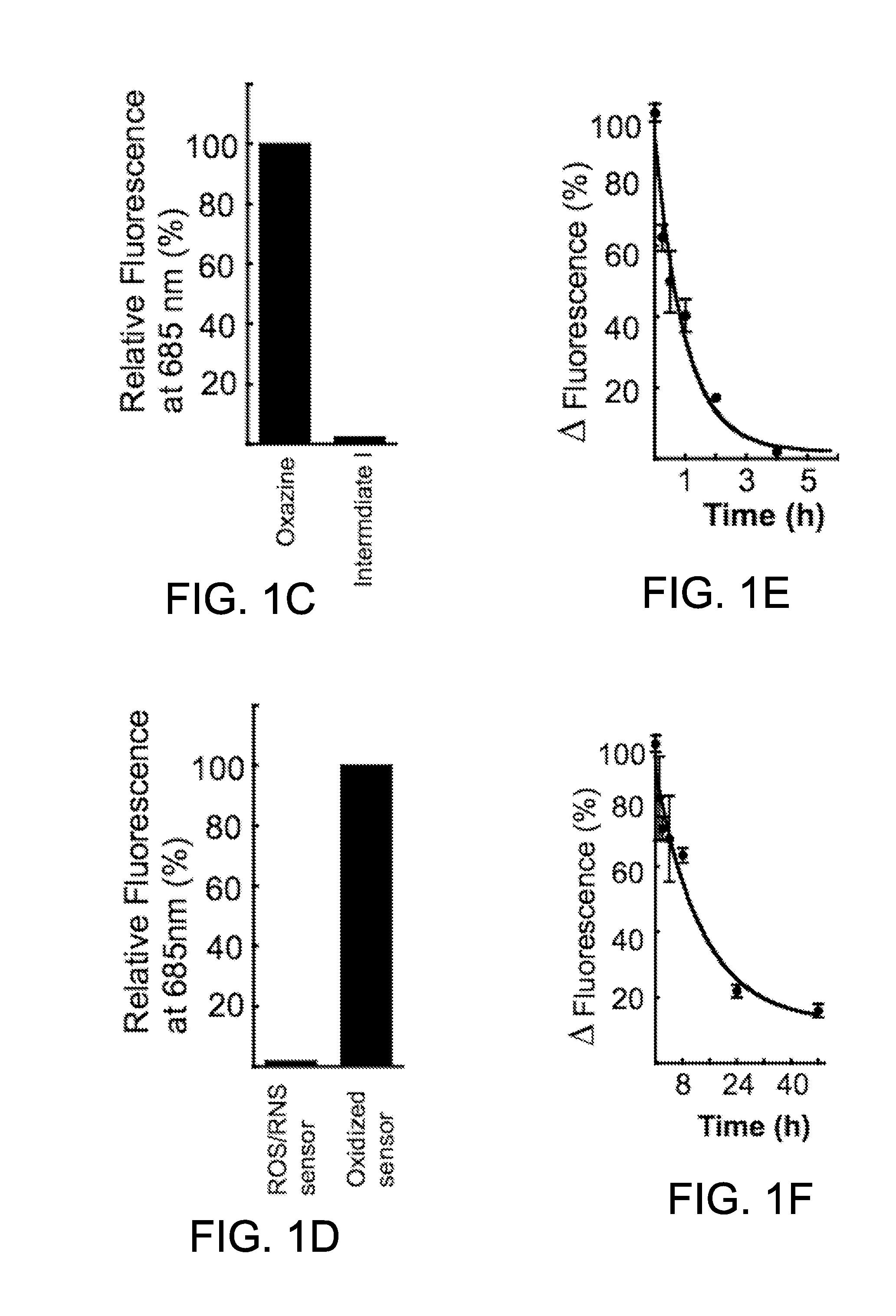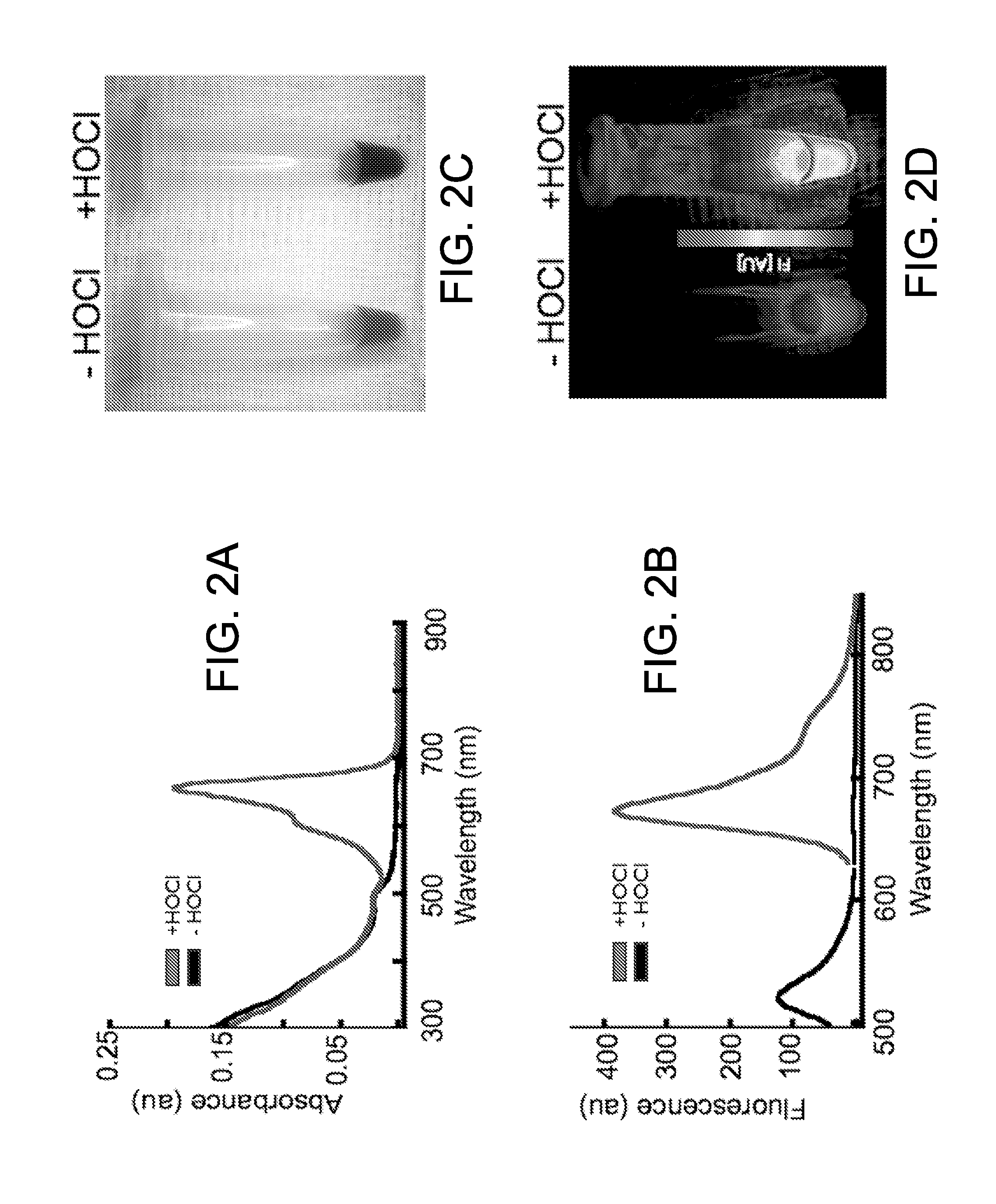Optical sensor conjugates for detecting reactive oxygen and/or reactive nitrogen species in vivo
a technology of reactive oxygen and conjugates, applied in the direction of diagnostic recording/measuring, ultrasonic/sonic/infrasonic diagnostics, drug compositions, etc., can solve the problems of poor dye properties, inability to use in vivo, hampered image of mpo function and ros generation in cells and animal models of human diseases, etc., to achieve the effect of improving pharmacokinetics and high substrate target concentration
- Summary
- Abstract
- Description
- Claims
- Application Information
AI Technical Summary
Benefits of technology
Problems solved by technology
Method used
Image
Examples
example 1
Synthesis of an Optical Sensor Conjugate Employing an Oxazine
[0104]Oxazine, as its perchlorate salt, was purchased from Acros Organics USA (Morris Plains, N.J.) and used as received. Alexafluor® 488 (AF488) succinimidyl ester was purchased from Molecular Probes. All other chemicals and solvents, unless noted, were purchased from Sigma-Aldrich or Fisher Scientific. Preparative high performance liquid chromatography (HPLC) was performed on a Varian 210 instrument equipped with a 335 diode array detector and a Varian Pursuit XRs 10 C18 250×21.2 mm column at a flow rate of 20 mL / min. All 1H (400 MHz) and 13C NMR (100 MHz) nuclear magnetic resonance (NMR) spectra were acquired on a Bruker DPX-400 spectrometer at ambient temperature and were referenced to tetramethylsilane as an internal standard. Absorption spectra were collected on a Varian Cary 50-Bio UV / visible spectrophotometer.
[0105]For determination of the extinction coefficient of the fluorescent small molecule, fresh stock soluti...
example 2
Optical Sensor Conjugate Blood Half-Life
[0112]In vivo pharmacokinetics of the small molecule alone and the optical sensor conjugate were determined in groups of mice. Each group consisted of 5 mice (C57 / B6, Jackson Labs) that were injected either with the small molecule, oxazine (50 nmol), or the nanoparticle, optical sensor conjugate (8-10 mg / kg body weight) while anesthetized (isoflurane 2-3% v / v+2 L / min O2). Retro-orbital bleeds were taken at various times and immediately transferred to a tube containing anticoagulant heparin. The blood samples were then imaged on the Bonsai fluorescence reflectance imaging system (Siemens) using the Cy 5 channel (lexc=620-650 nm with lem 680-710 nm) for oxazine and GFP channel (lexc=450-480 nm with lem 500-530 nm) for the AF488-labeled optical sensor conjugate due to the quenched nature of the fluorogenic small molecule attached to the nanoparticles. Fluorescence measurements were corrected for control background levels (blood from un-injected c...
example 3
Selectivity of the Optical Sensor Conjugate for ROS Species
[0115]All in vitro activation experiments were performed in triplicate using the optical sensor conjugate in PBS (10 mM phosphate, 2.7 mM KCl, 137 mM NaCl, pH 7.4) at a 5 nM concentration (2 μM with respect to activatable oxazine). Selectivity of the optical sensor conjugate was determined by screening against a panel of biologically relevant oxidants. The integrated fluorescence response from 650 to 850 nm (λex=620 nm) of the optical sensor conjugate was measured 30 min after treatment with the appropriate ROS or RNS at room temperature. The final oxidant concentration is 25 μM except for H2O2 (250 μM) and for the Fenton reagents (Fe(ClO4)2: 50 μM and H2O2: 250 μM) to generate HO. Other oxidant sources include: Sodium hypochlorite (Sigma-Aldrich), peroxynitrite in 4.7% aqueous NaOH (EMD Biosciences), NOC-9 nitric oxide donor (EMD Biosciences), potassium superoxide (Strem Chemical), and 2,2′-(azobis(2-amidinopropane)dihydroc...
PUM
 Login to View More
Login to View More Abstract
Description
Claims
Application Information
 Login to View More
Login to View More - R&D
- Intellectual Property
- Life Sciences
- Materials
- Tech Scout
- Unparalleled Data Quality
- Higher Quality Content
- 60% Fewer Hallucinations
Browse by: Latest US Patents, China's latest patents, Technical Efficacy Thesaurus, Application Domain, Technology Topic, Popular Technical Reports.
© 2025 PatSnap. All rights reserved.Legal|Privacy policy|Modern Slavery Act Transparency Statement|Sitemap|About US| Contact US: help@patsnap.com



